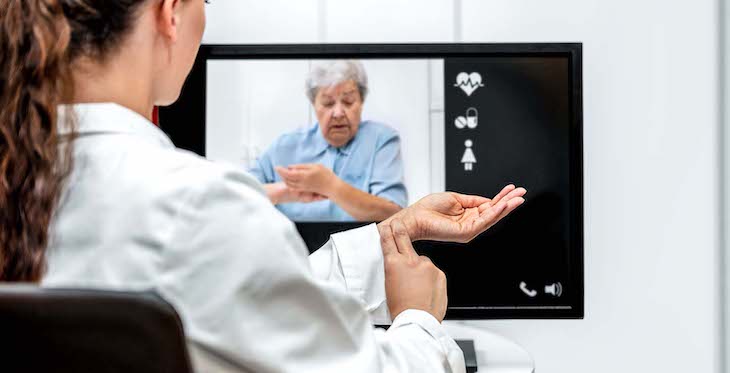We’ve seen enormous changes in the healthcare industry in recent years, mostly relating to the more efficient storage and usage of patient data through blockchain technology and the digitisation of patient files.
In the past two decades, the growing penetration of technology in the industry has yielded new medical devices, automated treatments, and improved diagnostic processes, giving doctors, scientists and patients renewed hope for the treatment of diseases some of which, until now, have been largely untreatable.
Blockchain has enabled the seamless global exchange of patient information in real time with reduced transaction costs and fewer administrative delays, enabling much faster, more secure and more efficient exchanges of health records between medical personnel. But technology isn’t only transforming the way patient information is handled; it is also revolutionising the way patients receive medical care.
Telemedicine -- the use of information technology to remotely diagnose, treat, or continuously monitor patients - has been hailed the ‘next disruptor’ of the healthcare industry. In other words, the industry has at last recognised that waiting for hours at a doctor's office to ask a simple question or get a prescription can in some cases be so burdensome and frustrating that it can prevent patients from seeking medical help. About time, too. If every other aspect of our lives has been digitised -- from job hunting, to online dating, to doing the groceries -- why haven’t we yet digitised the process of receiving medical care?
Often, a doctor’s check-up is so simple that all that is required is a quick verbal check of symptoms and a quick glance into the patient’s eyes. If this could be done remotely through video technology in less than five minutes, it benefits both the physician -- who can in turn help more patients on average -- and the patient, who needn’t risk becoming even more sick by leaving home and sitting in a crowded waiting room with other ill people. By empowering caregivers to remotely interact with their patients, telemedicine has the power to completely transform health care delivery, by making it far more affordable and available.
In fact, it has already begun to do this: in 2018, over 7 million patients used some sort of a telemedicine service in the U.S., and that number is only expected to rise over the next few years. Over half of America’s hospitals already use some sort of telemedicine, and there are more than 200 telemedicine networks in the US alone. Inevitably, with anticipated growth comes unprecedented industry investment - and the telemedicine industry is no exception. There have been huge investments in the global telemedicine market in recent years, so much so that it is anticipated to grow from its current $38.3 billion valuation to an impressive $130.5 billion by 2025.
This encompasses value derived not only from the services provided through telemedicine but the devices and platforms that support service delivery. As healthcare companies look for ways to reduce costs and improve patient-centered care, more and more providers -- as well as investors -- are choosing to invest in shares in telehealth.
According to recent studies, 56 percent of healthcare executives say they have already integrated telemedicine - and more specifically, software as a service (SaaS) business models - into organisation, while another 24 percent are currently looking to invest in telemedicine solutions. The remaining 20 percent are just beginning to become familiar with the opportunities presented by telehealth and telemedicine.
One particular platform - Colorado-based CirrusMD, which gives patients access to a board-certified physician in less than a minute on the app or on the web - has seen the largest investment to date in the telemedicine world, with a further US$15 million in funding having just been granted for the expansion of its telemedicine portfolio. The money was raised through a series B funding round led by Drive Capital, bringing its total venture capital raised to $26 million altogether. Founded in 2012 by an emergency physician, the platform is available across 50 states and differs from other telemedicine platforms in that members don’t pay upfront to physicians. Instead, it teams up with integrated delivery networks who pay doctors by the hour to deliver services via its platform.
CirrusMD is far from alone in the telemedicine sphere, mind you. It vies for the attention of patients alongside competitors Heal, Pager, Kry, HealthTap, Snap MD, Mfine, Pager, K Health, and Doctor on Demand, the latter of which just pulled in $50 million to continue expansion of its virtual doctor platform. Maven - the first telemedicine platform made specifically for women - just launched with $2.2 million in seed funding, and Spruce just raised a further $15 million for its new platform which caters to people with dermatology conditions.
With 25 percent of consumers admitting they would willingly switch their primary care provider for one that offers more telehealth services, and with 75 percent of people saying they would be happy to attend a doctor’s appointment remotely, it's extremely likely that the telehealth and telemedicine industry will grow at an exponential rate in the next few years, paving the way for huge opportunities for those willing to invest in the digital infrastructure that supports it.

